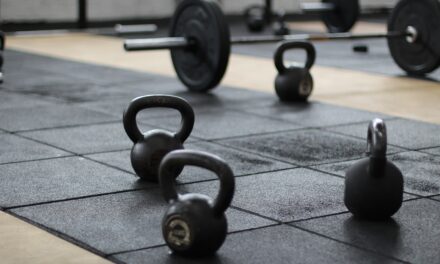The golden years are often heralded as a time for relaxation and reflection, yet they also present an opportunity to invest in our health through functional fitness. As we cross the threshold into our 50s and beyond, the concept of functional fitness takes on a profound significance. It’s not merely about maintaining fitness levels but ensuring our daily activities are performed with ease and independence, free from the constraints of age-related physical decline. This approach to fitness emphasizes exercises that mimic everyday actions, focusing on strength, flexibility, and balance to improve overall quality of life.
Functional fitness for those over 50 transcends traditional gym workouts. It integrates a holistic approach that considers the unique physiological changes associated with aging. The loss of muscle mass, reduced bone density, and the increased risk of chronic diseases like arthritis and osteoporosis make the need for a specialized fitness regimen more critical than ever. Yet, with the right strategy, these years can be some of the most vibrant and fulfilling of our lives.
This article delves into the heart of functional fitness for individuals over 50, exploring its significance, benefits, and how to implement it into your lifestyle effectively. Through expert insights and the latest research, we aim to guide you on a journey to achieving optimal health and vitality, demonstrating that age, indeed, can be just a number.
Join us as we unlock the secrets to maintaining strength, flexibility, and independence through functional fitness. Whether you’re looking to enhance your current exercise routine or starting fresh, this guide is your companion to thriving in your 50s and beyond.
The Core Principles of Functional Fitness After 50
Functional fitness targets the muscles and movements we use in our daily lives, focusing on exercises that improve strength, endurance, balance, and flexibility. For those over 50, this fitness approach is particularly beneficial, as it aligns closely with the physical activities encountered in everyday life, from carrying groceries to climbing stairs.
Strength Training: Foundation for Functional Independence
Strength training is not about building bulky muscles but about enhancing the muscle strength necessary for daily tasks. Incorporating bodyweight exercises, resistance bands, or light weights can significantly improve muscle health. Key exercises include squats, lunges, and push-ups, which support core strength and stability.
Endurance Activities: Keeping the Heart Strong
Cardiovascular health is crucial for sustaining energy levels and preventing chronic diseases common in later life, such as heart disease and diabetes. Brisk walking, swimming, and cycling are excellent low-impact options that promote heart health and endurance without placing undue stress on the joints.
Balance and Flexibility: The Pillars of Mobility
Improving balance and flexibility is essential for preventing falls—a common concern for those over 50. Practices like yoga, Pilates, and tai chi not only enhance flexibility but also significantly improve balance, coordination, and body awareness, contributing to a safer and more active lifestyle.
Integrating Functional Movements
Functional fitness emphasizes movements that mimic daily activities, incorporating multiple muscle groups and joints. Exercises like step-ups mimic stair climbing, while arm lifts with light weights can simulate reaching for high shelves. Such movements ensure that workout routines directly translate to improved performance in everyday tasks.
Expert Insights on Implementing Functional Fitness
Leading health professionals and fitness experts emphasize the importance of consistency, personalization, and safety when embarking on a functional fitness regimen after 50.
– Start Slow: Gradually introduce new exercises into your routine, focusing on mastering form and technique before increasing intensity.
– Listen to Your Body: Acknowledge the body’s signals and adapt your fitness plan accordingly. Incorporating rest days and modifying exercises can prevent overexertion and injury.
– Seek Professional Guidance: Working with a certified fitness instructor who understands the nuances of training older adults can provide tailored advice and modifications to suit individual health conditions and fitness levels.
– Stay Engaged: Find activities that you enjoy and vary your routine to keep it interesting and engaging. Consistency is key to seeing long-term benefits.
Summary and Takeaways: Navigating the Journey to Functional Wellness
Functional fitness offers a pathway to enhanced well-being and independence for those over 50. By focusing on exercises that improve daily life’s necessary strength, endurance, balance, and flexibility, seniors can maintain an active and fulfilling lifestyle.
– Incorporate a blend of strength training, endurance activities, and balance and flexibility exercises into your weekly routine.
– Adapt exercises to match your fitness level and physical capabilities, focusing on functional movements that mirror daily tasks.
– Prioritize safety and listen to your body, adjusting your routine as needed to accommodate your health and wellness journey.
– Seek enjoyment in your fitness activities to ensure consistency and long-term engagement.
Embracing functional fitness after 50 is not just about adding years to your life but adding life to your years. With the right approach, you can enjoy greater independence, improved health, and a higher quality of life.






